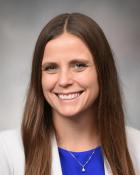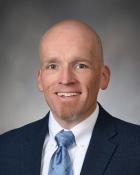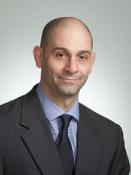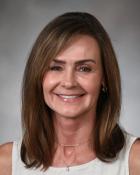Tetralogy of Fallot is a type of congenital heart defect. A child with tetralogy of Fallot has four specific heart defects present at once. These defects affect how blood flows through the heart and lungs. While tetralogy of Fallot is usually diagnosed before or soon after birth and surgically repaired in infancy, adults with the condition will still need monitoring throughout their lives. The Adult Congenital Heart Program at the UK Gill Heart & Vascular Institute has the cardiology expertise you need to treat tetralogy of Fallot as an adult.
People with tetralogy of Fallot have all four of the following heart defects:
- Overriding aorta, an abnormal positioning of the main artery from the heart
- Pulmonary stenosis, a narrowing of the pulmonary valve and pulmonary artery that obstructs blood flow between the heart and lungs
- Right ventricular hypertrophy, an abnormally thick wall of the right ventricle
- Ventricular septal defect (VSD), a hole in the wall between the heart’s two lower chambers
These defects reduce the flow of oxygen-rich blood to the body, often causing newborns to look blue from low oxygen levels. Some patients have pulmonary atresia instead of pulmonary stenosis, a more serious condition where there is no pulmonary valve, and no blood can flow to the lungs. Around 1 in 2,500 babies are born with tetralogy of Fallot.
Many adult patients who had successful surgical repair for tetralogy of Fallot as infants remain symptom-free for decades. But some may experience ongoing symptoms of tetralogy of Fallot such as:
- Irregular heartbeat, or arrhythmia
- Racing or pounding heartbeat
- Tiring easily during exercise
Over time, adults are likely to need additional procedures as the original repairs deteriorate. Pulmonary valve regurgitation, which causes blood to flow backward into the heart, is one of the most common complications. If left untreated, this can lead to heart failure, and you may experience symptoms such as:
- Coughing or wheezing
- Extreme fatigue
- Shortness of breath
- Swelling in the legs or feet
Since the advent of childhood surgery for tetralogy of Fallot in the 1940s, prognosis for patients has continued to improve. Only 50 percent of patients with tetralogy of Fallot who do not have surgery in early childhood will survive to age 6. But patients who are treated and do not have a coexisting genetic syndrome have a 30-year survival rate of 95 percent. Patients who have pulmonary atresia have a slightly lower 30-year survival rate of 78 percent, usually due to a higher number of hospitalizations and procedures. Many people with tetralogy of Fallot live long and healthy lives well past middle age, even into their 70s and 80s.
There are no definite causes of tetralogy of Fallot. However, some people are more likely to be born with it, including people with Alagille syndrome, DiGeorge syndrome and Down syndrome.
Children with congenital heart disease become adults with congenital heart disease (CHD). Ninety percent of children born with CHD have a normal life expectancy due to improved surgical interventions and better medical management. At all ages, close monitoring and expert care for CHD patients are essential. Despite this, studies indicate that 2 out of 3 young adults with CHD don’t transition from pediatric to adult CHD care. Not getting continued cardiac care can lead to a variety of health problems and poor outcomes.
To guide teens and their families through the transition, UK Gill Heart & Vascular Institute team members talk about the transition early and often. Starting at age 15, teens with CHD begin transition education. One Wednesday every month, a special transition clinic staffed by adult congenital heart disease providers, is held to meet with teens and their families to discuss important topics, including:
- Abilities and limitations experienced as an adult with CHD
- Lifelong need for proper CHD monitoring and treatment
- What adult CHD care may involve over the years
Additionally, once you transition to adult care with the Adult Congenital Heart Program at UK Gill Heart & Vascular Institute, we work hard to enable you to keep your appointments and testing on track. We also work hard to empower you with knowledge and assist you in being your best advocate to live your best life. If you miss an appointment, we will call to reschedule.
During your first visit to the UK Gill Heart & Vascular Institute’s Adult Congenital Heart Program, you’ll meet our clinic nurse, social worker and other members of your care team. You’ll also undergo imaging exams, which may include an echocardiogram or a cardiac MRI.
Once imaging is complete, you will meet with an adult congenital cardiologist and other team members for up to one hour. You’ll discuss the results of your echocardiogram and your health history and symptoms. You will also get in-depth education about your diagnosis, how it may affect you moving forward and possible treatment options. The meeting is also a great opportunity to ask any questions about living with CHD.
When coming to your appointment:
- Bring a list of any medications or supplements you take and surgeries you’ve undergone.
- Dress comfortably.
- Have your insurance information on hand. UK HealthCare accepts most insurers, and financial assistance is available.
- You may want a family member or friend with you to take notes or help ask questions.
Where we are located
The UK Gill Heart & Vascular Institute is located at 800 Rose St. in Pavilion G, on the first floor of UK Albert B. Chandler Hospital. We will mail you a map and directions when your appointment is scheduled.
Patient drop-off
Patients can be dropped off in front of the main entrance to Albert B. Chandler Hospital at 1000 S. Limestone. If you are dropped off at the main entrance, you’ll enter the revolving doors on the ground floor of the hospital. Take the main stairs just to the left (or elevator across the atrium) to the first floor of Pavilion A.
After climbing the stairs or taking the elevator, turn left. You’ll pass the Kentucky Wall and Kentucky Children’s Hospital on your right. Continue to the end of the hall until it comes to a T shape. Turn left and the Gill clinic entrance is across from an open area housing the organ donor wall.
Parking
It is easiest to park in the UK HealthCare Parking Garage, across from the hospital at 110 Transcript Ave.
There are two paths from this garage to the Gill clinic:
- You may take the free shuttle from Level A of the parking garage. You’ll exit the shuttle at the Pavilion A/ Pavilion G stop in front of the main entrance to the hospital. After climbing the stairs or taking the elevator, turn left. You’ll pass the Kentucky Wall and Kentucky Children’s Hospital on your right. Continue to the end of the hall until it comes to a T shape. Turn left and the Gill clinic entrance is across from an open area housing the organ donor wall.
- From Level C of the parking garage you may walk or take a golf cart across the pedway to the first floor of Pavilion A. Turn left past the help desk and walk away from the dining hall. You’ll pass the Kentucky Wall and Kentucky Children’s Hospital on your right. Continue to the end of the hall until it comes to a T shape. Turn left and the Gill clinic entrance is across from an open area housing the organ donor wall.
If you need help finding your way, information desks are located inside the main entrances to Pavilion A, both on the ground floor and at the end of the pedway on the first floor. You may also call the information desk at 859-323-5816.
Clinical trials provide access to novel treatments for those in the adult CHD program at UK Gill Heart & Vascular Institute. Through our Cardiology Clinical Research Center, patients benefit from advances in valve replacement and other therapies before they become standard treatment. Your care team will notify you if you qualify for an ongoing clinical trial.








